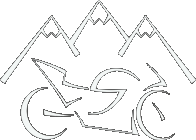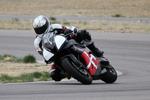Some info on this:
While the spotlights were on the riders, the most worrying development comes among the teams, with the 2012 MotoGP grid looking worryingly threadbare. There were complaints that this season's complement of just 17 riders was a bit of an embarrassment, but it could be much worse for next season. So far, there are only 12 confirmed entries for 2012 - three Ducatis, four Hondas, four Yamahas and Colin Edwards on the NGM Forward CRT machine - with 2 more - an LCR Honda and the Aspar team - certain to join them, though riders and, in the case of Aspar, bikes still have to be confirmed. That makes a field of just 14, growing to 16 if Pramac field a single-rider team (as hoped) and Suzuki remain in the series with their current (very low) level of involvement. Both those rides are looking increasingly unlikely, however, Pramac already having twisted Dorna's arm at the end of the 2010 season to secure funding to run 2 Ducatis instead of 1, and the silence coming from Suzuki in Japan reaching deafening levels.
The reason for the lack of bikes is two-fold, and both reasons have been debated at length in the past. The first is the astonishing inability of the teams to find sponsors, and the inability of the series as a whole to attract money into the championship. Part of that is down to the markets the series serves: MotoGP is massive in Spain and Italy, but large multinationals have no interest in reaching two of Europe's most stagnant and troubled economies. The countries they are trying to reach are the up-and-coming economies in the east and in South America: China, India, Brazil, Argentina. But MotoGP doesn't race there, though a round has been added in Argentina in 2013. Sponsors want to market their brands in emerging markets, but MotoGP doesn't go to India or Indonesia, instead they have four races in Spain and two in Italy.
The second is perhaps a more significant factor, and a sign that a major revolution is about to be unleashed in MotoGP. The costs of leasing a MotoGP bike have grown fast over the years, despite the factories' best efforts to keep the price down. For just the cost of leasing a satellite MotoGP machine with no hope of winning a race, teams could be running a top-level two-rider effort in Moto2, or a very serious World Superbike team. And that's without the cost of riders, staff, hospitality units, and a major expense, travel and accommodation for the 18 rounds that comprise the MotoGP season. Put all those together and it is easily double or even triple the lease price of the cheapest satellite machines.
The costs have already broken Aspar - one of the most efficient and well-funded teams in the paddock, running championship-level efforts in both 125 and Moto2, and coming in to MotoGP with big plans of expansion two years ago. After failing to reach a deal with Ducati, Aspar will now become a CRT entry, in all likelihood fielding a BMW-powered Suter for 2012. The switch by Aspar could be crucial, encouraging other, less prominent teams to follow suit and enter as a Claiming Rule Team. After all, the difference between spending 6 million euros to fight for 10th or spend 3 million euros fighting for 12th is huge in cash terms, but relatively tiny in terms of results. The satellite bikes have never been truly competitive as the role of electronics has grown, making the CRT route a much more attractive prospect.
Dorna, it seems, is trying to sweeten the deal further. Rumors from the paddock suggest that the teams are being told that the rules stipulating a prototype chassis will be interpreted very liberally indeed. Though FIM President Vito Ippolito was clear - "Any complete motorcycle model derived from series production, homologated or not for the FIM Superbike/Supersport/Superstock is not eligible and will not be accepted in the FIM Grand Prix World Championship classes," the Venezuelan said in a press release back in June - there are rumors that the changes required to transform a WSBK-spec Aprilia RSV4, for example, into a bike that would pass scrutineering for MotoGP are much more limited than expected. It is unclear at the moment whether a heavily modified standard frame would qualify as a prototype, for example, or whether the chassis has to have been built from scratch, and preferably by a company other than the one that built the road bike that the engine was taken from as a starting point for the CRT machine. Clarification on that point should be forthcoming very soon.
If more teams can be persuaded to become Claiming Rule Teams, then the balance of power inside the paddock will shift away from the manufacturers and towards IRTA, Dorna and the FIM. Though the manufacturers still have a contract giving them a veto over the technical regulations, the fact that deals have now been done with individual manufacturers rather than the MSMA as a whole already gives Dorna more leverage. As manufacturers break their part of the bargain - to provide sufficient bikes to put on a show, made impossible by the massive cost increases produced by the MSMA-imposed technical regulations, such as the switch to 800cc and the 21 liter fuel limit - their position grows weaker still, especially as participation starts to shrink. Honda will be reducing from 6 bikes to 4, or if Marc Marquez gets a separate team in MotoGP, a total of 5. Ducati has reduced from 6 bikes down to 3, with the possibility of a 4th being added if Pramac stays in. To be fair to Ducati, their reduction has come more of a result of poverty inside the teams rather than cutbacks from inside the factory, as is the case with HRC.
The CRT machines have unexpected allies in some (though not all) of the crew chiefs and engineers around the paddock. At the moment, a crew chief's options are limited by what the factory engineers tell them, only operating with permitted paramaters. Even at the factory level, input is limited, the engineers and designers deciding the best course of action to follow. With CRT machines, the opportunities for crew chiefs to explore solutions is greatly expanded, and they have a lot more freedom at their disposal. For many, especially those more prone to tinkering, Tech 3's legendary crew chief Guy Coulon being the best example, that freedom to invent, imagine and create is highly desirable, and is tempting them away from the factory model. Jorge Lorenzo's crew chief Ramon Forcada has spoken positively of the CRT project, regarding it as an interesting and attractive prospect.
If Suzuki pulls out, the odds of which are probably better than 50%, and Pramac decides they can't afford to lease a satellite machine from Ducati, then Dorna may be goaded into drastic action. If the grid is not to drop below the size it is this season, then Dorna may be forced to try some radical solutions. The factories may not like those solutions, but then they may not have any option but to accept them. Realistically, they have nowhere else to go.






 Reply With Quote
Reply With Quote